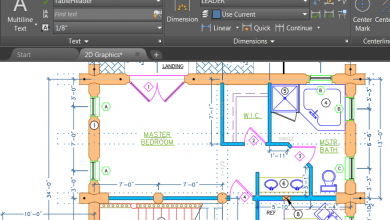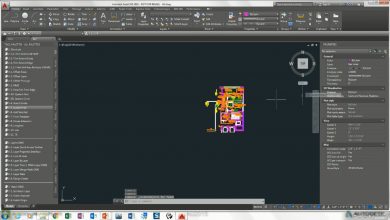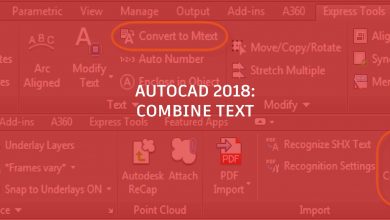
Now, we’ve reached our last installment of a four-part series on conducting a process assessment of AutoCAD workflows and procedures. Finally, after bringing structure to a disorganized mountain of information as discussed in Step 3, the final step is to present and communicate what was found. While the meat of such an exercise is undoubtedly the things your organization could do better, it’s equally essential to spotlight what your organization is doing well.
Contents
Step 4: Articulate What You’ve Learned
As with every stage of this assessment, the key once again is balance. Finding balance at this stage is critical, as it is the very thing that will establish a great deal of the credibility of the document you author.
An assessment that only identifies what needs to be changed is likely to be read as an overly critical document lacking pragmatism and objectivity. By contrast, identify only things that are going great, and those reading your document will likely question your procedural diligence.
Structuring Your Assessment Document
My primary assessment deliverable is a formally written document summarizing my findings. A key challenge to authoring such a document is the fact you’re documenting highly technical information for an audience that’s likely more business-centric than technology-centric. Threading the metaphorical needle can be difficult.
Like everything we’ve talked about in this series, you should make the assessment process your own. Above all, align what you do with the needs of your organization and your organization alone.
In that way, the framework that’s worked best for me is to summarize my observations, and then bring everything together into a prioritized list of next steps.
Let’s begin with the observation summary. Remember the headings and subheadings identified during Step 3 of this series? Those are more-or-less the headings within the observations section of your assessment document.
Observations Section
With that structure in place, you now need to author copy to summarize and connect your observations with your conclusions/recommendations. Something I leverage for both assessment documents and the presentations I develop is something I call PBS.
PBS is an acronym I define as Problem, Benefit, Solution. My logic behind that structure is, in a perfect world, we would solve every problem. Unfortunately, the business world is not perfect. We’re constrained by things like budgets, revenue, resources, staff bandwidth, and more. Because of that, while we would like to solve every problem, not every problem is worth solving with those constraints applied.
To overcome those business constraints, there needs to be a clearly understood benefit. Put another way, why is the problem worth solving? That’s where the benefit comes into play. Clearly state the benefit of devoting limited resources to solving the problem you’ve identified.

Finally, after summarizing the problem and benefit, I then advance to the Solution. Put simply, what solution could my firm implement to solve the identified problem?
Of course, while what’s happening in the back of my mind is Problem, Benefit, Solution (PBS), writing things like Problem on a report is not always received well. Not just that, but in the interest of delivering a balanced and pragmatic report, not everything I document will be a problem. Some of what I write will be the best practices I found teams within my organization subscribed to.
For those reasons, I start with Problem, Benefit, Solution. But it becomes Observation, Comment, Recommendation (OCR) in the document.
Everything of merit I witnessed during the information gather stage of the process gets an OCR statement in the report I prepare. Suppose the Observation is something that can be improved. In that case, my copy will read as the Problem (Observation), benefit (Comments), Recommendation (Solution). Conversely, if what I witnessed was a best practice all along, the Comments of my OCR statement will articulate why that best practice is important, and my Recommendation will be to continue doing what teams are already doing.
Either way, these OCR statements are critical for many reasons. Primarily, these statements are what will support and substantiate the next steps section of your assessment document.
Next Steps Section
While it’s crucial to articulate a recommended solution for everything you witnessed during the assessment process, these alone will leave most readers feeling overwhelmed. Put another way, the primary question will be, where do we even start to address everything found during the assessment process?
This is not a question you want your document audience answering on their own. Instead, you should make it a point to clearly articulate which of the dozens of observations you feel are most critical and which ones can wait a while.
Your primary goal in this exercise is to demonstrate two things. First, a prioritized next steps list indicates you’ve thought critically about what opportunities have the biggest business impact. That impact might be a measurement of the benefit of stopping something, or it could be a measurement of something easily implemented but with a substantial business impact.
In addition to demonstrating your business acumen, defining the next steps also makes possible what appears to be an impossible need. It makes what may initially seem like an impossible task possible.
Finally, after authoring your assessment document, it’s time to share your findings. Typically you’ll do this with either a managerial or leadership team within your organization. Essentially what you are trying to achieve is to define and articulate the business, not the technical case, for addressing the findings of your assessment.

As with most things throughout this process, you can choose the method that works best for you and your organization. In the assessments I’ve completed over the years, sometimes I’ve just used a PDF of the actual document. Other times I’ve prepared a more polished PowerPoint presentation. Again, the key here is to remember what we’re here to do.
Above anything else, our objective is to communicate information. If you can do that just by walking through the document you’ve prepared, then do that. If, on the other hand, your audience expects something with a little more polish, go ahead and invest the time to prepare a PowerPoint.
However, just like the collection of information at the very beginning of this process, the goal is to meet your audience where they are. If they expect a document, use a document. If, however, they expect a polished slide presentation, give them a polished slide presentation.
Whatever path you choose throughout this assessment process, it is crucial to tailor it to your organization. Tailored to the objectives of your organization. Tailored to the business outcomes your organization needs to achieve. That’s ultimately been the focus throughout this entire four-part series.
Looking back through the series, it’s no question that performing a proper AutoCAD process assessment is a lot of work. From bandwidth to soliciting honest and authentic feedback, there are undoubtedly many challenges to overcome along the way. Recognizing those many nuances, as we mentioned initially, it may be best for your organization to reach out to a consultant to conduct a proper AutoCAD assessment for your organization. Like most things throughout this process, the answer to that question can be answered by one person and one person alone. And that’s you.
On the other hand, by conducting an AutoCAD process assessment yourself, you’ll likely demonstrate to the management of your organization that you possess far more than technical acumen. And it’s through that exercise of showcasing a business acumen that many CAD managers can define new paths of growth in their own careers, too.
Source: Autodesk







